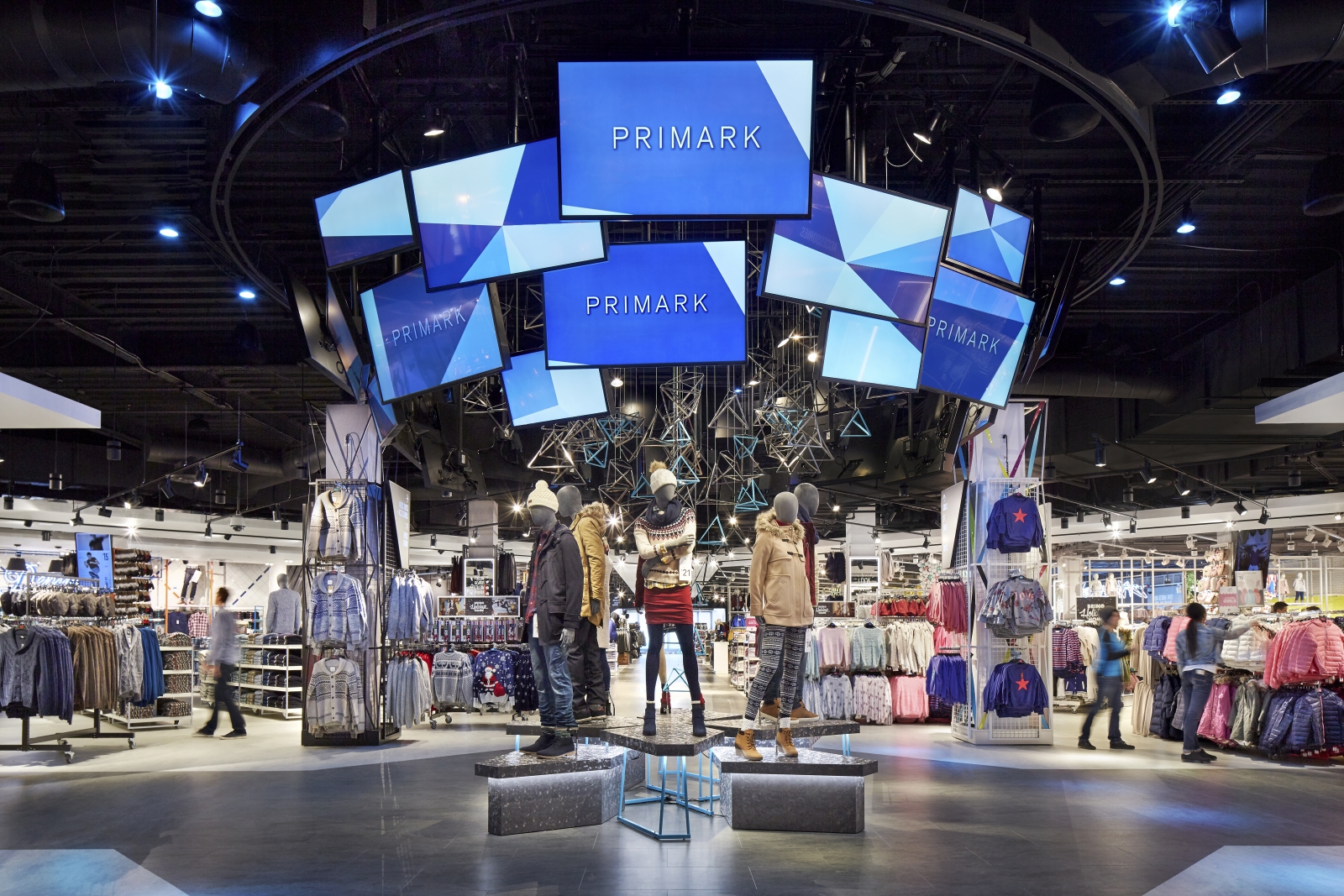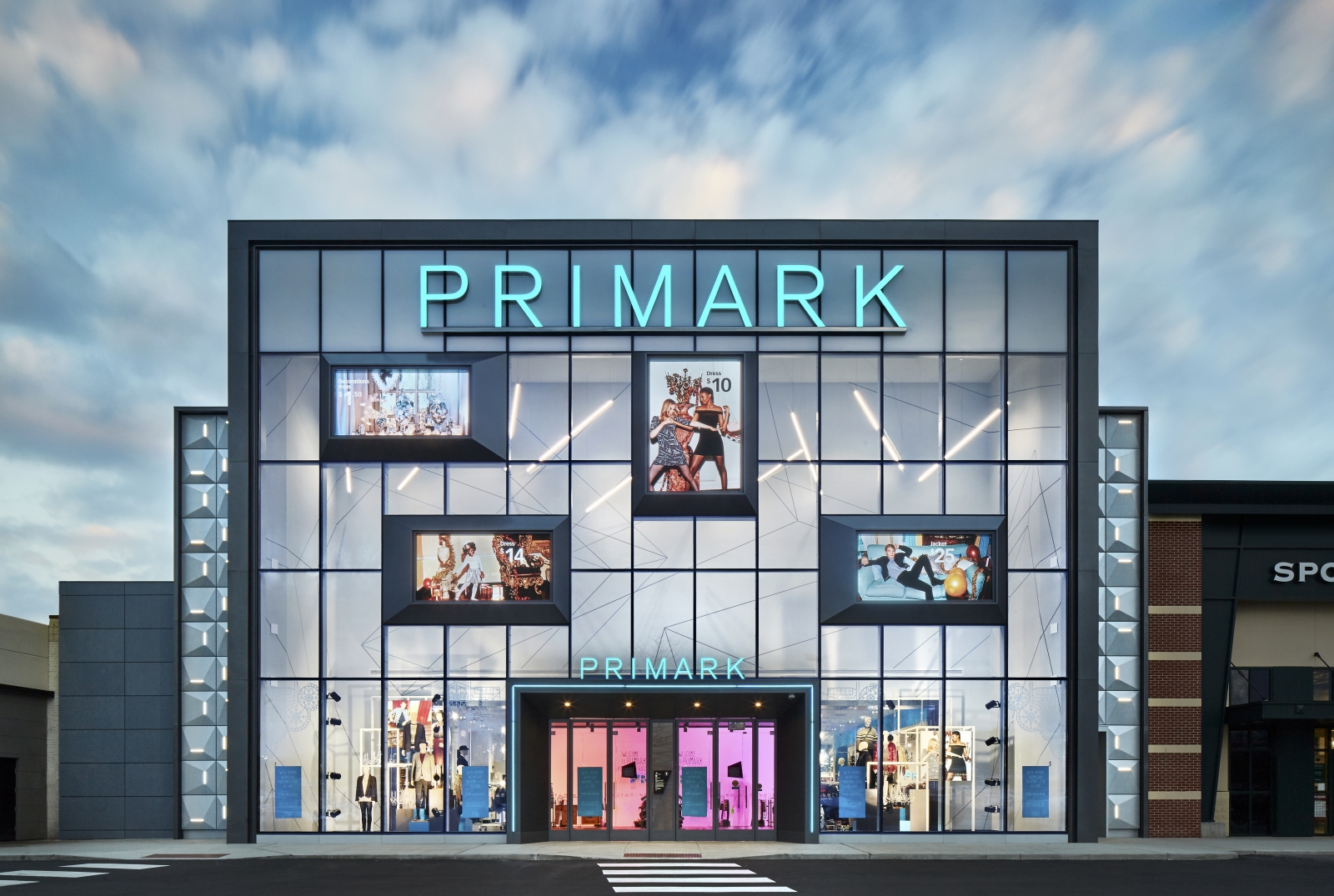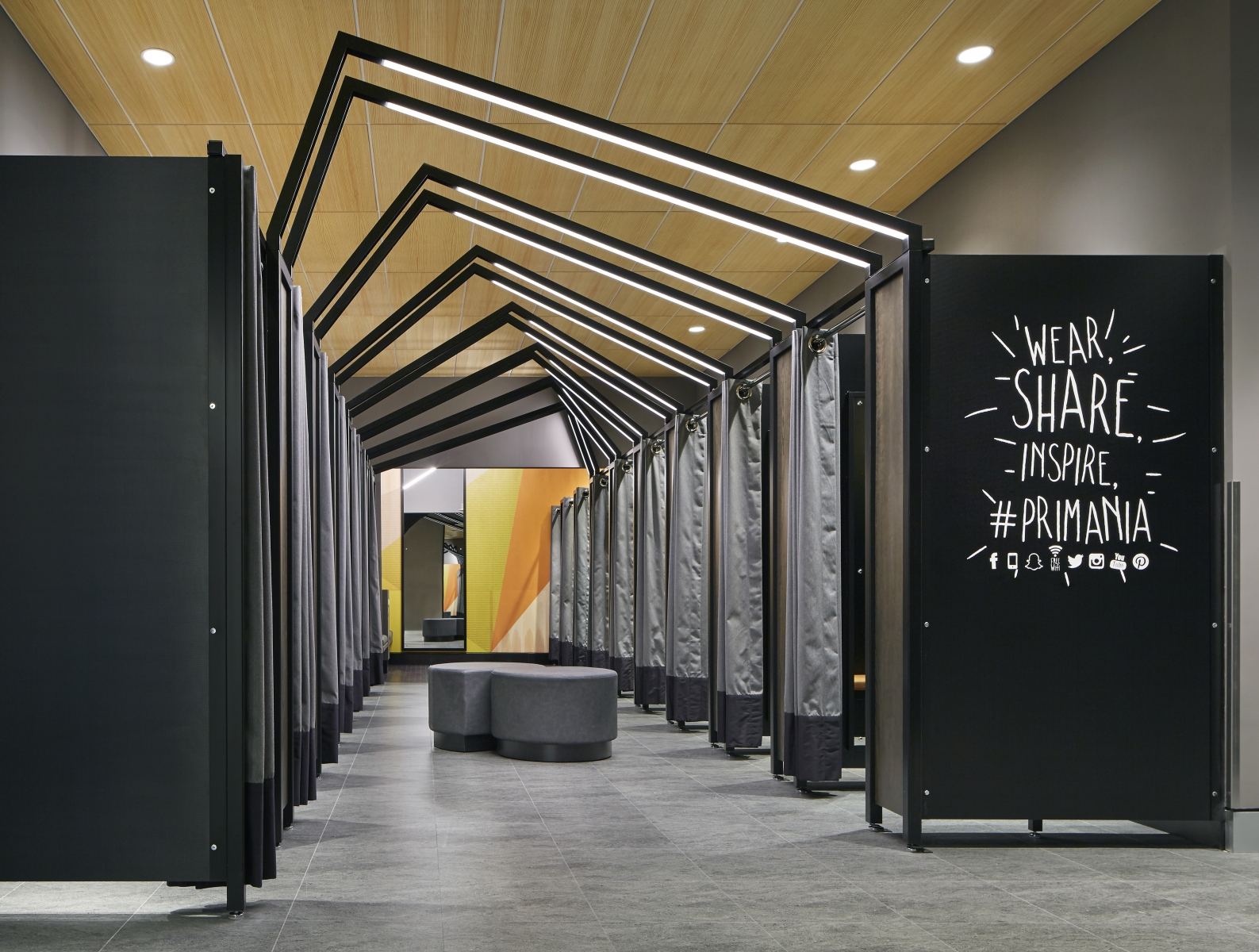
February 29, 2016
Designing "Digital Moments" Into the Retail Space
From fitting rooms to phone apps, the touchscreen has invaded and completely transformed every aspect of the shopping experience.

Inside the new Primark flagship store in Pennsylvania’s King of Prussia Mall, giant LCD screens dominate. A 40-foot-by-18-foot billboard faces shoppers going down to the lower level.
All photography courtesy © John Muggenborg/Gensler
The Rebecca Minkoff store in Soho, New York allows customers to use mirrorlike screens on the store’s main floor to flip through the company’s lookbooks and order complimentary coffee and champagne. It also offers interactive fitting rooms, as does Polo Ralph Lauren, where RFID chips embedded within the clothes send information to the mirrors, which display size and color options, as well as recommendations. The Oak Labs–designed smart fitting room provides a more seamless shopping experience for the customer and offers the company valuable insight into what items are taken into the fitting rooms and which ones end up being purchased or left behind.
The goal of this, and similar projects, is to leverage technology for a more immersive shopping experience—a new way for consumers to engage with companies. And this kind of interactive retail is not restricted to the world of high fashion. Last November, Dublin-based fast-fashion retailer Primark announced its entrance into the U.S. market with a Gensler-designed flagship store in Pennsylvania’s King of Prussia Mall. The store boasts a slew of technological bells and whistles, from a barrage of LCD screens and changing LED lights (including a party setting for special in-store events) to neon hanger chandeliers. Primark seeks to provide a platform for its mostly young and digitally savvy shoppers to share experiences and stories, and in the process has sped up the already breakneck pace of fashion trends through an almost real-time feed of shopping hauls and street-style inspiration from around the world. “Our challenge was to design an integrated, cohesive space that did not feel like a sea of clothes,” reports Jessica Beck, senior associate and graphic designer at Gensler. “These digital moments throughout the store draw shoppers in, help them navigate, give them an opportunity to take a break and be entertained, and become an awesome backdrop for the digitally minded tween selfie.”
And while the majority of technological innovations in the retail space have been successful, increasing time spent in stores and boosting sales, the next frontier for retailers is to ensure that the shopping experience is streamlined in less-traditional shopping settings as well—from the daily commute to the home. As research by PayPal Canada and Ipsos has shown, 70 percent of commuters would like to browse and shop while using public transportation, so the boundaries of retail have been substantially blurred, and the market is ripe for innovation. Perhaps no better example exists than the Amazon Dash button, a Wi-Fi-connected device that automatically reorders a shopper’s favorite products at the press of a button, reducing the need for shoppers to leave their homes or even unlock their phones.

The facade of the Primark store has four digital LED windows that show through the glazing.






